Don’t invest unless you’re prepared to lose all the money you invest. This is a high‑risk investment and you should not expect to be protected if something goes wrong. Take 2 mins to learn more.
Buy Polygon (MATIC) in UK With GBP | CoinJar
Polygon
MATIC
Overview
What is Polygon?
Why do investors buy Polygon (POL)? Formerly MATIC, POL is the native cryptocurrency of the Polygon ecosystem.
What is Polygon (POL)?
So what is POL and what is it used for?
How does Polygon and POL work?
Imagine you’re at a busy train station, waiting for your regular local train (that’s Ethereum). But right next to it, there’s an express train called Polygon. It runs on the same tracks but makes fewer stops, so it’s more efficient. That’s what Polygon is: A speedy parallel blockchain that works alongside Ethereum.
This is why it is called a Layer-2 Scaling Solution. Polygon is like a sidekick to Ethereum. It helps increase the speed of transactions and promotes competitive fees. Think of it as a shortcut for crypto transactions.
The Polygon ecosystem offers various fun crypto apps. Some examples are given below.
What is POL? Is it a cryptocurrency?
POL is Polygon’s own cryptocurrency. When you use Polygon, you pay with POL. Holders of POL can become validators, which means they can “work” for the ecosystem, protecting the network by checking transactions. This is called “staking”. In return, they earn more POL tokens.
POL holders also get to vote on changes to Polygon.
Polygon (POL) makes crypto life convenient and efficient. Polygon also claims to be carbon neutral, and hopes to be carbon positive soon.
Fun stuff in the Polygon ecosystem
Blockchain games are popular on Polygon.
At the time of writing, Yuliverse was topping the rankings for Polygon gaming dApps.
Yuliverse operates within a future cyberpunk world. It uses NFTs which players can buy and sell.
Another popular Polygon game is Matr1x Fire. It is a mobile shooting game within the Metaverse that operates on the Polygon network. Matr1x Fire immerses players in a futuristic cyberpunk world with captivating visuals. The game’s art style combines neon lights, advanced technology, and dystopian elements.
Players take part in fast-paced shooting battles and players can combat for NFTs (non-fungible tokens) and digital art assets. These assets include avatars, weapons, profile pictures (PFPs), gloves, and other props. Collecting rare and valuable NFTs adds an interesting layer to the gameplay.
Polygon NFTs
NFTs can be created directly on Polygon or moved there from other blockchains.
Generally speaking, Polygon NFTs have competitive transaction fees and efficient transactions compared to Ethereum’s Mainnet.
More well-known NFT collections include y00ts and Hell Cats. There are NFT marketplaces like OpenSea and Magic Eden on Polygon too. They are like NFT shopping malls where users can buy and sell these digital treasures.
Over 843 million NFTs have been minted (created) on the Polygon blockchain so far.
Spending POL in the Polygon Ecosystem
There are a lot of ways to use POL in the Polygon ecosystem. First, users have to connect to the POL Bridge. This just means that you can move your digital assets between Ethereum and Polygon networks.
Once funds are on Polygon, users can explore over 19,000 decentralised applications (dApps). Users will need POL to pay for transaction fees (gas) within the Polygon ecosystem.
Is Polygon (POL) a good investment?
Polygon is a growing ecosystem of dApps, NFT projects, and DeFi platforms. Many projects are integrating with Polygon to leverage its benefits. In this way, POL is expected to grow in usage.








Cash, credit or crypto?
Buy Polygon using Visa or Mastercard. Get cash in your account with Faster Payments Service (FPS). Convert crypto-to-crypto with a single click.How to buy Polygon with CoinJar
Start your cryptocurrency portfolio with CoinJar by following these steps.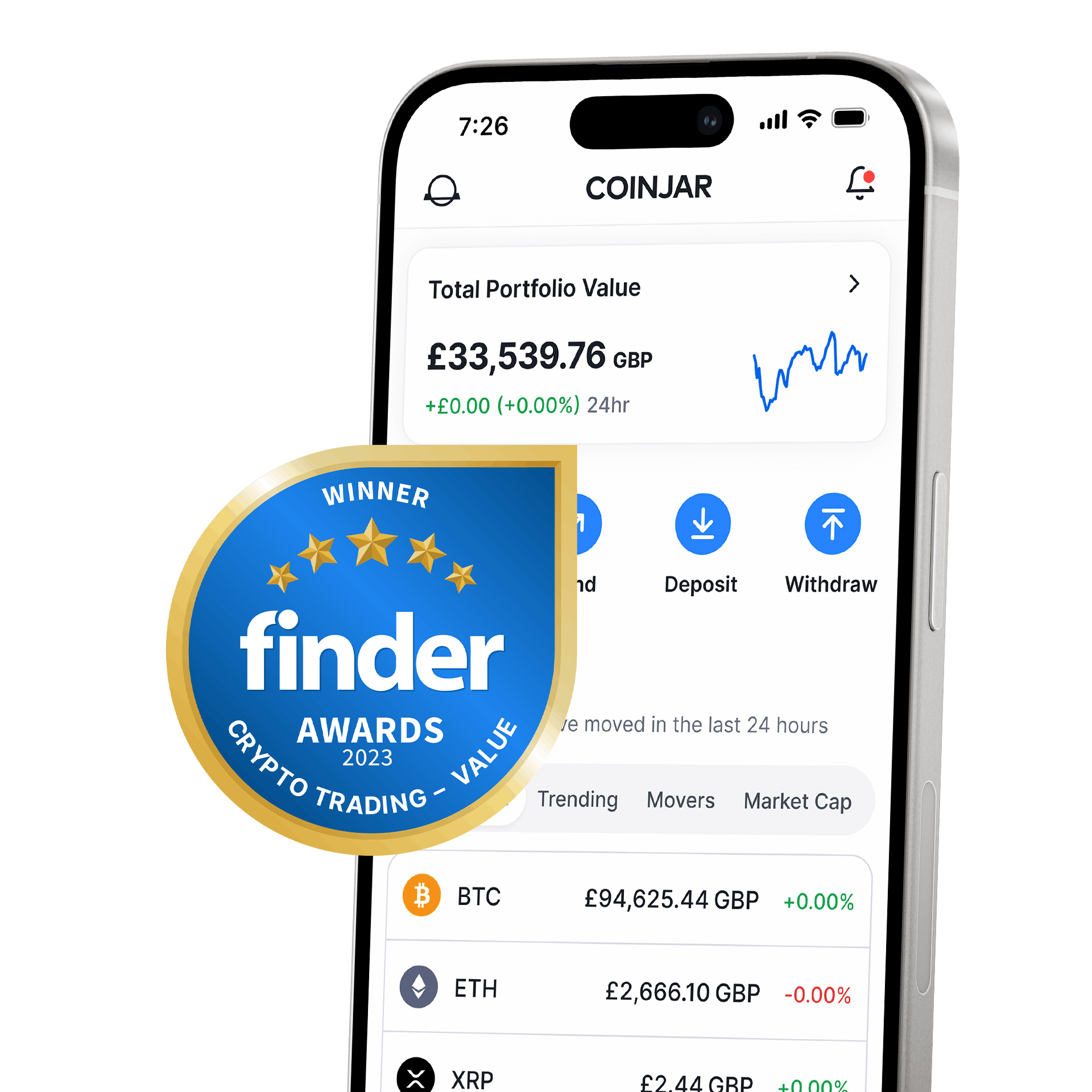
Finder Awards Winner 2023
CRYPTO TRADING - VALUEFinder Awards Winner 2023
CRYPTO TRADING - VALUE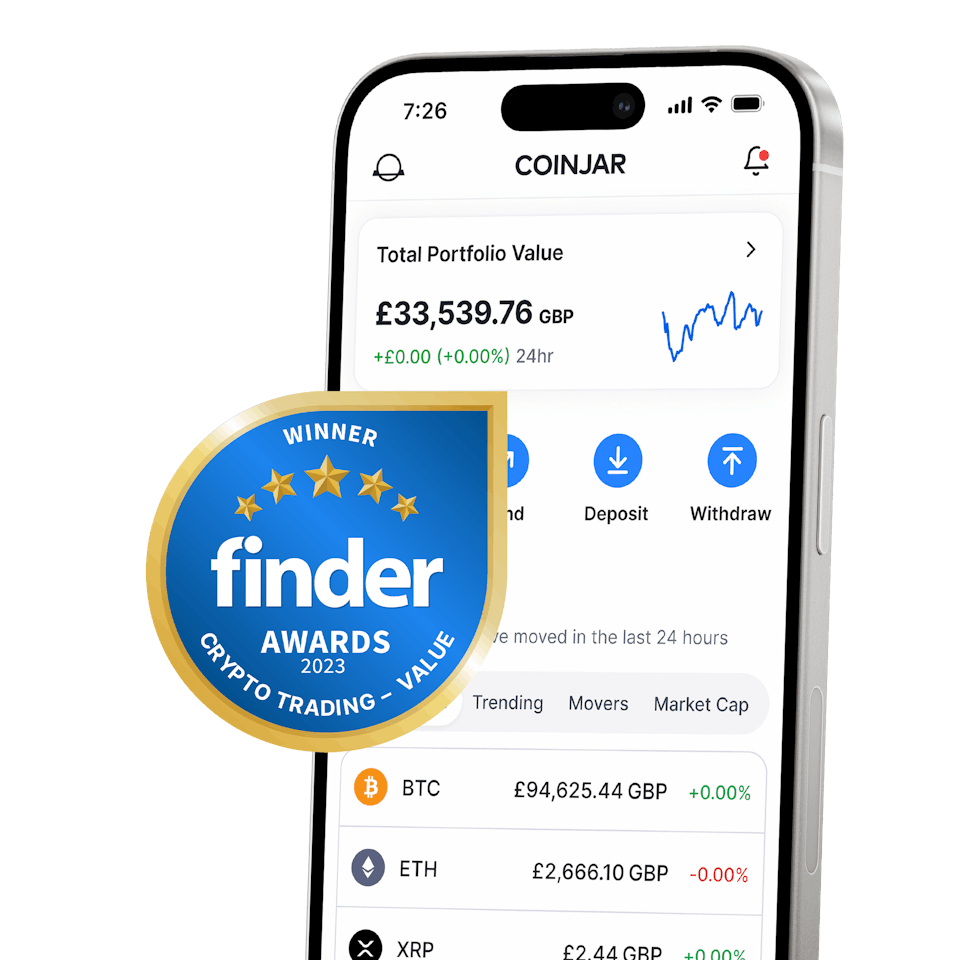
Featured In

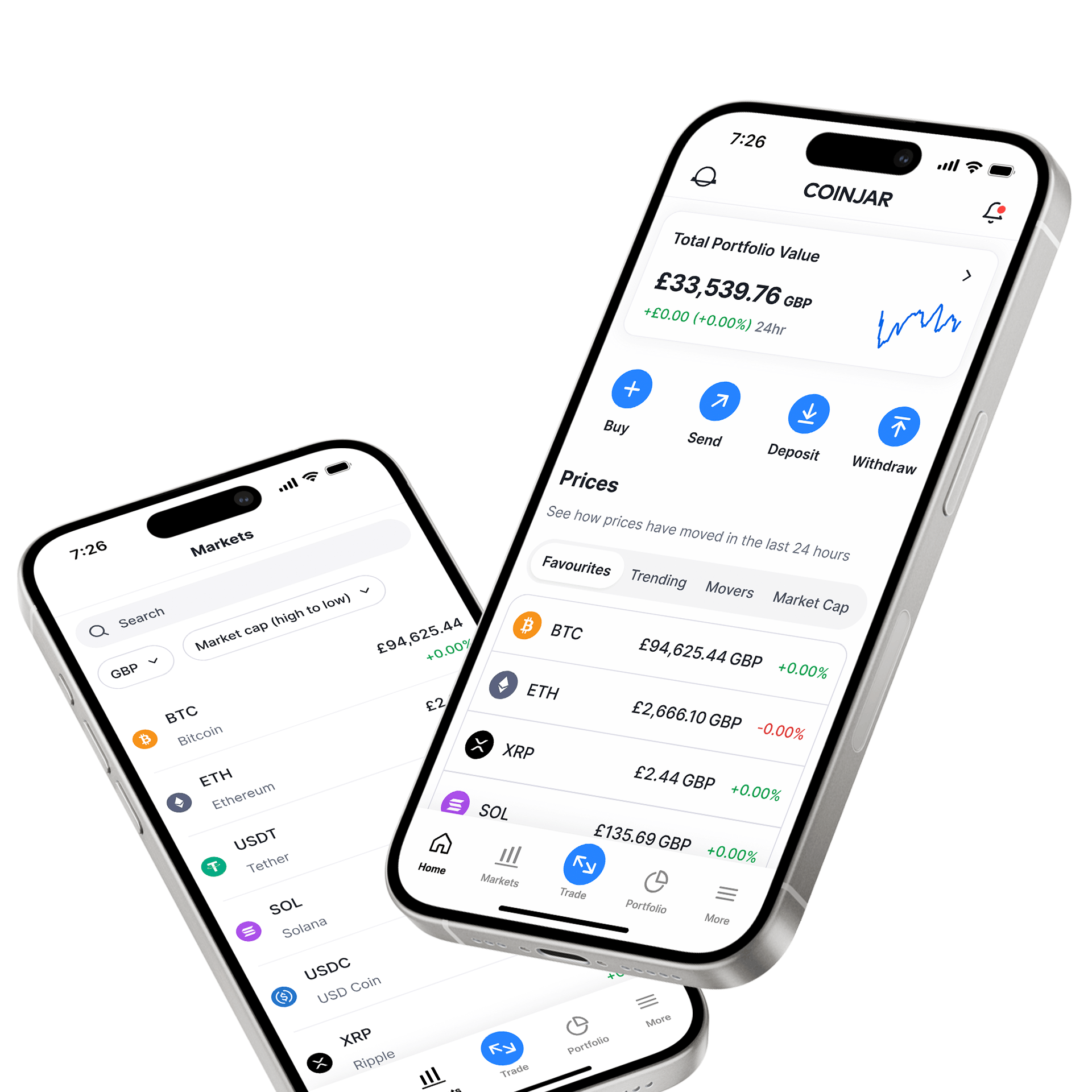
CoinJar App
All-in-one crypto walletCoinJar App
All-in-one crypto wallet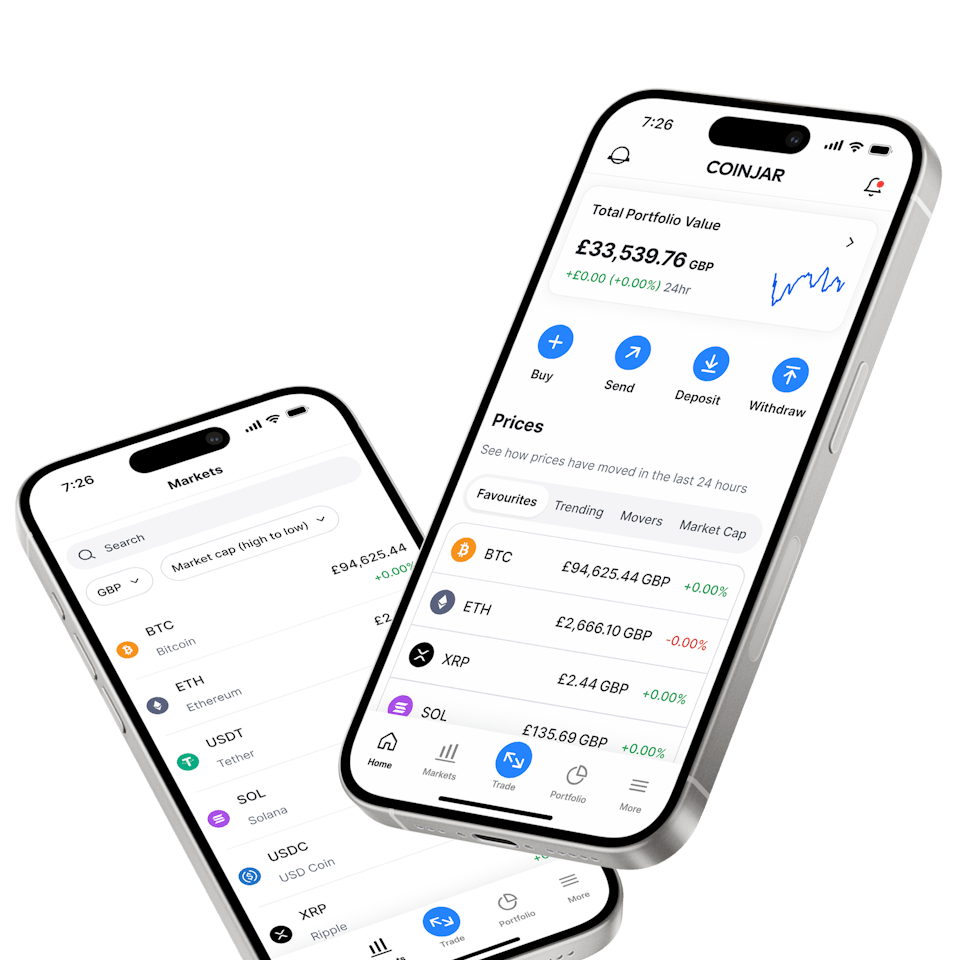
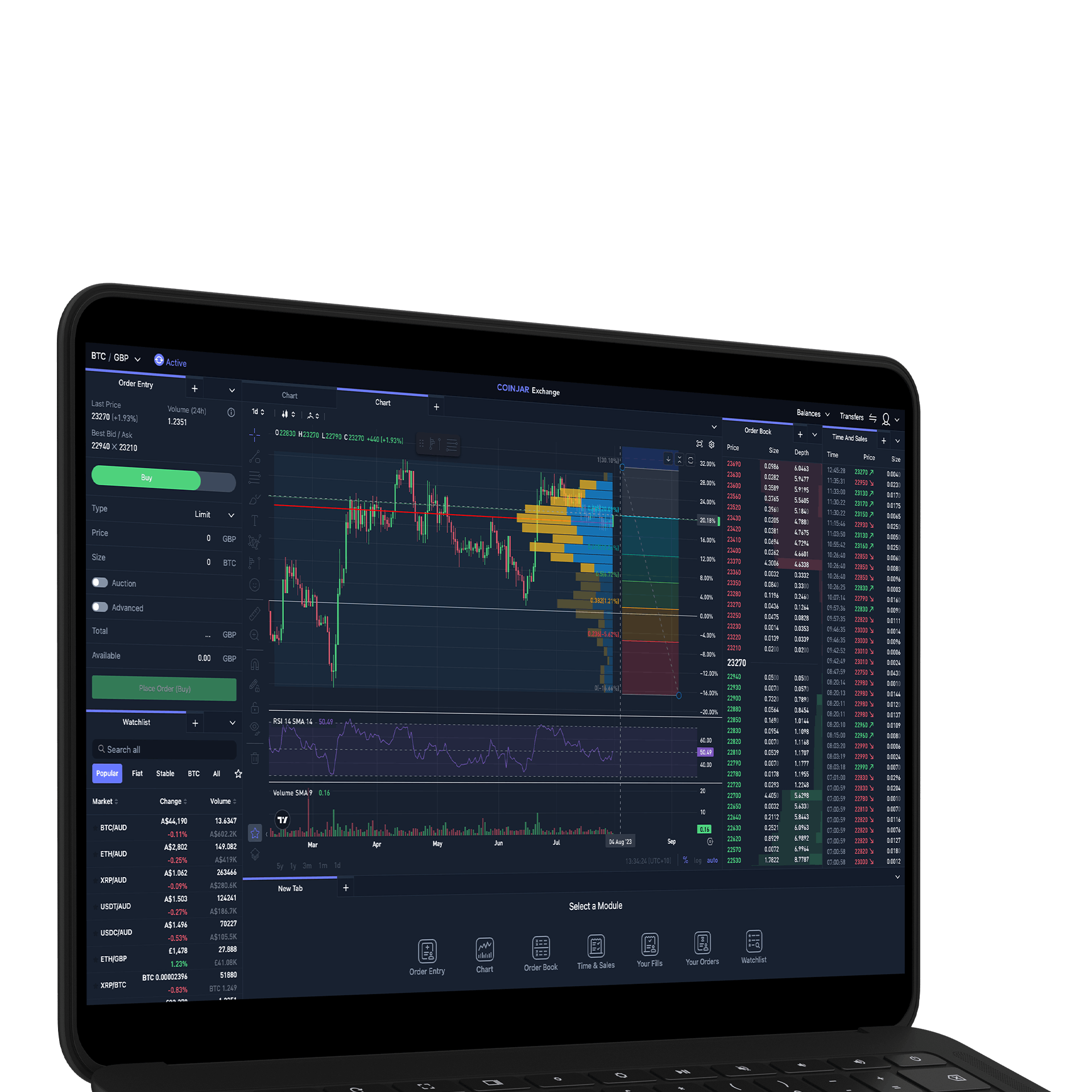
CoinJar Exchange
FOR PROFESSIONAL CRYPTO TRADERS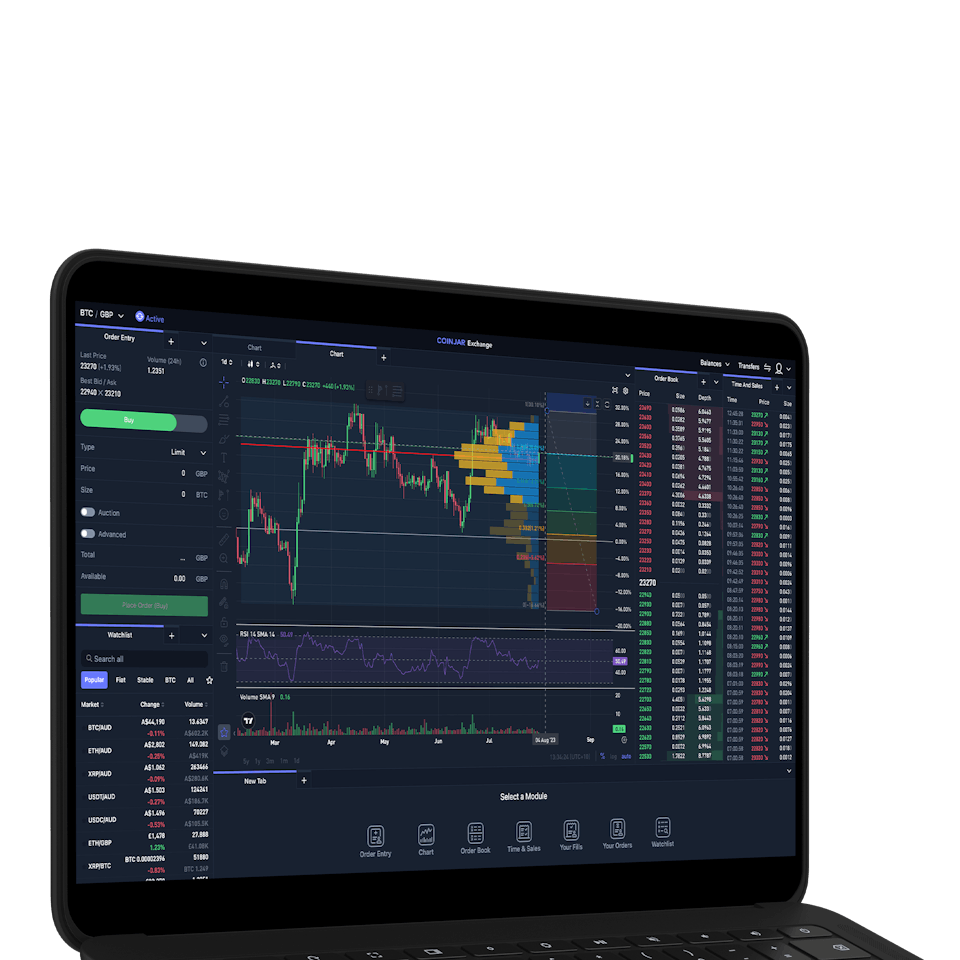
CoinJar Exchange
FOR PROFESSIONAL CRYPTO TRADERS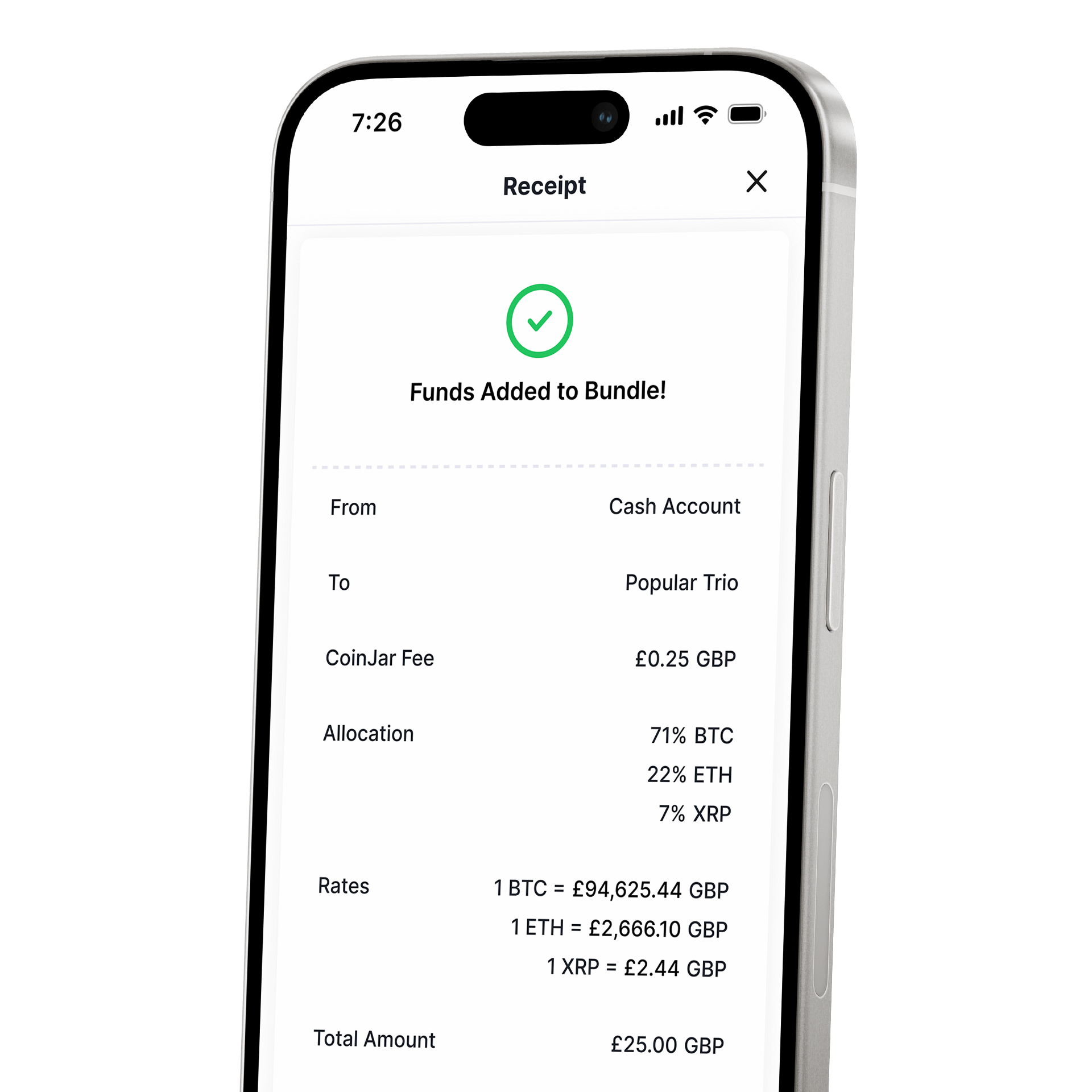
CoinJar DCA & Bundles
AUTOMATE & DIVERSIFY YOUR PORTFOLIOCoinJar DCA & Bundles
AUTOMATE & DIVERSIFY YOUR PORTFOLIO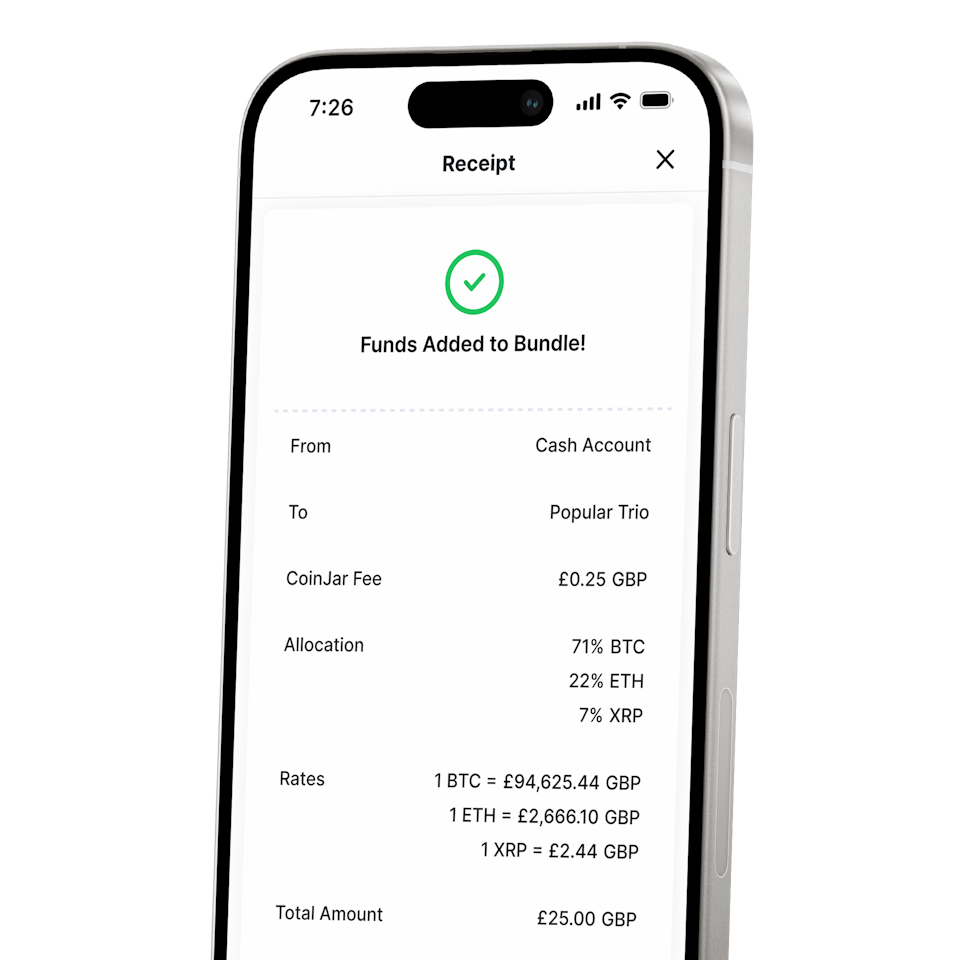
Frequently asked questions
What is Polygon crypto?
Polygon is a layer two or sidechain scaling solution that runs alongside the Ethereum blockchain. It provides efficient transactions and competitive fees for users.
The network’s native cryptocurrency is called POL, which serves various purposes like paying fees, staking, and participating in governance.
Standard Risk Warning: The above article is not to be read as investment, legal or tax advice and it takes no account of particular personal or market circumstances; all readers should seek independent investment advice before investing in cryptocurrencies.
The article is provided for general information and educational purposes only, no responsibility or liability is accepted for any errors of fact or omission expressed therein. Past performance is not a reliable indicator of future results.
We use third party banking, safekeeping and payment providers, and the failure of any of these providers could also lead to a loss of your assets. We recommend you obtain financial advice before making a decision to use your credit card to purchase cryptoassets or to invest in cryptoassets. Capital Gains Tax may be payable on profits.
CoinJar's digital currency exchange services are operated in the UK by CoinJar UK Limited (company number 8905988), registered by the Financial Conduct Authority as a Cryptoasset Exchange Provider and Custodian Wallet Provider in the United Kingdom under the Money Laundering, Terrorist Financing and Transfer of Funds (Information on the Payer) Regulations 2017, as amended (Firm Reference No. 928767). In the UK, it's legal to buy, hold, and trade crypto, however cryptocurrency is not regulated in the UK.
It's vital to understand that once your money is in the crypto ecosystem, there are no rules to protect it, unlike with regular investments. You should not expect to be protected if something goes wrong. So, if you make any crypto-related investments, you're unlikely to have recourse to the Financial Services Compensation Scheme (FSCS) or the Financial Ombudsman Service (FOS) if something goes wrong.
The performance of most cryptocurrency can be highly volatile, with their value dropping as quickly as it can rise. Past performance is not an indication of future results. Remember: Don't invest unless you're prepared to lose all the money you invest. This is a high-risk investment and you should not expect to be protected if something goes wrong. Take 2 mins to learn more at: https://www.coinjar.com/uk/risk-summary.
UK residents are required to complete an assessment to show they understand the risks associated with what crypto/investment they are about to buy, in accordance with local legislation. Additionally, they must wait for a 24-hour "cooling off" period, before their account is active, due to local regulations. If you use a credit card to buy cryptocurrency, you would be putting borrowed money at a risk of loss.
We recommend you obtain financial advice before making a decision to use your credit card to purchase cryptoassets or to invest in cryptoassets.
Specific risks associated with DeFi tokens Decentralised Finance (or 'DeFi') tokens (e.g. UNI, AAVE) are crypto-assets linked to financial applications and protocols built on decentralised blockchain technology. DeFi tokens carry the following risks:
Smart contract risk: DeFi relies heavily on smart contracts. Even a minor coding error or oversight can lead to a contract being exploited, potentially resulting in significant losses for DeFi tokens.
Regulatory risk: DeFi operates in a decentralised manner, often without intermediaries or financial crime controls. Regulatory bodies across jurisdictions might introduce new regulations impacting the use, value, or legality of certain DeFi protocols or assets.
Rug-pulls / Exit scams: Some DeFi projects might be launched by anonymous or pseudonymous teams, increasing the risk of "rug pulls" where developers abandon the project and withdraw funds, leaving investors with worthless tokens.
Data/oracle risk: DeFi protocols often rely on external data sources or 'oracles. Manipulation or inaccuracies in these data sources can lead to unintended financial outcomes within the protocols. Protocol complexity: The complexity of some DeFi protocols can make it difficult for average users to fully understand the mechanisms and associated risks.
Specific risks associated with meme coins:
'Meme coins' (e.g. DOGE, SHIB, PEPE) are crypto-assets whose value is driven primarily by community interest and online trends.
Meme coins carry the following risks:
Volatility risk: Meme coins can have extreme price volatility, often experiencing rapid and unpredictable price fluctuations within short periods. The value of meme coins can be influenced by social media trends, celebrity endorsements, and other factors unrelated to traditional investment fundamentals. Lack of utility: Meme coins often lack intrinsic value or utility, being primarily driven by community interest, online trends, and speculative trading.
Market manipulation: Meme coins may be susceptible to increased risk of market manipulation including 'pump-and-dump' schemes, where the price is artificially inflated followed by a sudden crash.
Lack of transparency: Meme coins may have limited available information about their development teams, goals, and financials. This lack of transparency can make it challenging to assess the credibility and potential of a meme coin accurately.
Emotional investing: Meme coins often garner strong emotional reactions from investors, leading to impulsive decisions. Emotional trading activity can amplify losses.
Specific risks associated with stablecoins:
There is a risk that any particular stablecoin may not hold their value as against any fiat currency; or may not hold their value as against any other asset. Stablecoins carry the following risks:
Depegging events: Depegging events may occur with stablecoins that fail to maintain adequate controls and risk mitigants. A depegging event is when the value of the stablecoin no longer matches the value of the underlying asset. This could result in a loss of some or all of your investment.
Counterparty risk: Counterparty risk arises when an asset is backed by collateral, involving a third party maintaining the collateral, which introduces risk if the party becomes insolvent or fails to maintain it.
Redemption risk: Redemption risk refers to the possibility that an asset's ability to be redeemed for underlying collateral may not be as anticipated during market fluctuations or operational issues.
Collateral risk: Collateral risk refers to the possibility of the collateral's value declining or becoming volatile, potentially impacting the asset's stability, particularly when it is another crypto-asset.
Exchange rate fluctuations: Stablecoins, often denominated in US Dollars, expose investors to fluctuations in the USD:GBP exchange rate. Algorithmic risk: Algorithm risk refers to the possibility of an asset's stability being compromised due to unexpected failure or behaviour of the underlying algorithm, potentially leading to loss of value.
CoinJar does not endorse the content of, and cannot guarantee or verify the safety of any third-party websites. Visit these websites at your own risk.
Your information is handled in accordance with CoinJar’s Privacy Policy.
Cryptoassets traded on CoinJar UK Limited are largely unregulated in the UK, and you are unable to access the Financial Service Compensation Scheme or the Financial Ombudsman Service.
We use third party banking, safekeeping and payment providers, and the failure of any of these providers could also lead to a loss of your assets.
We recommend you obtain financial advice before making a decision to use your credit card to purchase cryptoassets or to invest in cryptoassets. Capital Gains Tax may be payable on profits.
CoinJar’s digital currency exchange services are operated in the UK by CoinJar UK Limited (company number 8905988), registered by the Financial Conduct Authority as a Cryptoasset Exchange Provider and Custodian Wallet Provider in the United Kingdom under the Money Laundering, Terrorist Financing and Transfer of Funds (Information on the Payer) Regulations 2017, as amended (Firm Reference No. 928767).
Apple Pay and Apple Watch are trademarks of Apple Inc. Google Pay is a trademark of Google LLC.
This site is protected by reCAPTCHA and the Google Privacy Policy and Terms of Service apply.

